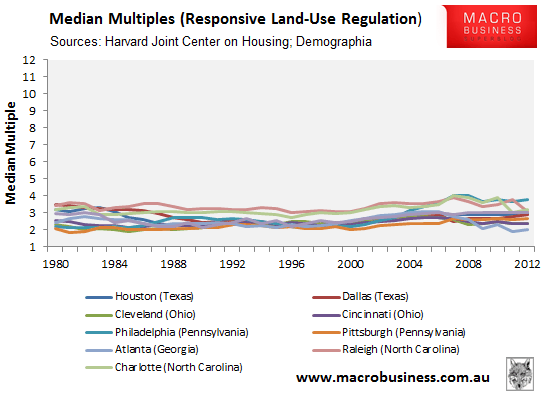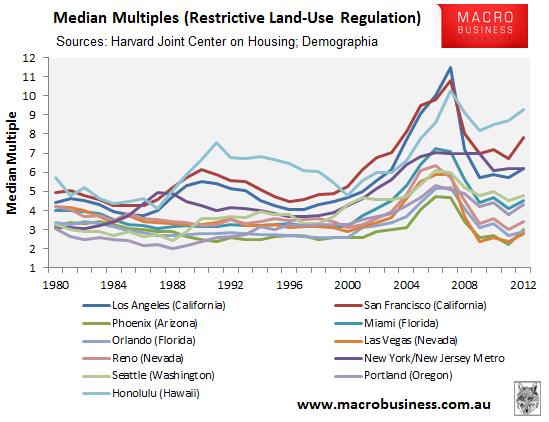
Earlier this month, the International Monetary Fund (IMF) published a working paper, Asset Price Bubbles: A Selective Survey, which provides an overview of recent literature on asset price bubbles and examines some of the behavioural drivers behind those bubbles.
The IMF uses a very straightforward definition of an asset price bubbles, namely that “a bubble is a deviation of the market price from the asset’s fundamental value”. Or, put another way, a bubble occurs “when an asset’s trading price exceeds the discounted value of expected future cash flows”.
In its literature review, the IMF provides the below summary of famous asset price bubbles, many of which will sound familiar to readers:
1) Dutch tulip bubble:
Perhaps the earliest known example is the tulip bubble in Holland that started in 1634 and burst in February 1637. Amid the general fascination with rare species of tulips among the Dutch, prices on rare tulip bulbs rose, attracting the attention of speculators. Since the supply of rare bulbs was severely limited in the short run, and demand sky-rocketed due to the influx of speculators, prices rose rapidly amid heavy trading. At the bubble’s peak, a single tulip bulb sold for an equivalent of $60,000 today.
2) South Sea bubble:
The South Sea bubble involved the market price of an English firm called the South Sea Company. This firm had no assets but told investors that it had come up with a strategy to earn enormous profits in the South Seas. During the first half of 1720 the company’s stock price rose by over 700 percent, then fell during the second half of 1720 to about 50 percent above what it had been at the start of the year.
3) Mississippi bubble:
Refers to the rapid rise and fall in the share price of a company popularly known as the Mississippi Company. In effect, the company controlled all trade between France and the rest of the world outside of Europe. Later, the company also purchased the right to mint new coins in France and the right to collect most French taxes. By January 1720, it had become Europe’s most successful conglomerate and European investors, who knew little about the remote colony of Mississippi at the time, were excited about the possibility of finding gold and silver there. The company’s expansion was financed by issuing shares, the price of which rose dramatically as the company’s reach expanded. Share price rose from around 500 livres tournois in January 1719 to 10,000 livres in December 1719. The market became so active that even low-income individuals started buying the company’s shares. The trend reversed and stock prices began to fall in January 1720 as investors started selling shares in order to turn capital gains into gold coins. Instead of paying off in gold coins, the company tried to get investors to accept paper money, agreeing to assume that the share price was 10,000 livres. The exchange of shares for paper money caused a runaway inflation that reached a monthly rate of 23 percent. Finally, Law devalued shares in the company in several stages during 1720; by September 1721, the price had dropped to its prebubble price of 500 livres.
4) 1929 US stock market and real estate crash:
The crash involved the collapse of both stock and real estate prices. By the end of 1932 real estate prices in Manhattan had fallen by 67 percent from the third quarter of 1929 and stayed down for the remainder of the decade. Mortgage lenders suffered large losses, limiting future lending. Moreover, the collapse of the housing sector greatly depleted households’ wealth, contributing to the severity of the Great Depression.
5) 1989/90 Japanese stock market and real estate crash:
In the 1980s, Japan experienced a rapid run-up in equity and real estate prices. From 1980 to the peak in 1989, the Japanese stock market rose 373 percent in real terms but fell by 50 percent in the next three years. Land prices followed a similar pattern. They almost tripled in the second half of the 1980s, and at its peak in 1990, the market value of all the land in Japan was four times the land value in the United States. By the end of 1993, Japanese land prices had dropped by almost 50 percent. Some argue that the collapse of the bubble had a lasting effect, slowing down the rate of economic growth up until the present.
6) Dot Com bubble:
Started around 1995. From that time until March 2000, when the bubble started to deflate, there was a rapid growth in the internet sector and related fields, fuelled by the supply of new internet IPOs. The mysterious nature of the new technology added to its allure. The internet-heavy NASDAQ Composite rose from 775.20 in January 1995 to 2,505.89 in January 1999 and more than doubled from this point to its peak of 5,048.62 on March 10, 2000, after which it started declining, reaching a low of 1,314.85 in August 2002. During the bubble period, investment banks responded to the high demand for internet shares by loosening their standards for the types of firms they typically took public. A large fraction of the new internet IPOs never generated any profit; the general thinking was that these firms would initially offer their services for free in order to capture market share and would start generating revenue later. Many of the new companies had the same business model and competed in the same market, ensuring that a large fraction of them would eventually fail.
The IMF also points out that many bubbles are instigated by cheap credit and notes that bubbles can burst or deflate gradually.
A plausible story underpins most bubbles:
According to the IMF, most bubbles historically “have had a compelling and sensible story behind them. For example, the dot-com bubble fed on the argument that the new technology would bring great improvements in productivity; similar lines of reasoning were offered during the past railroad and electricity booms. Land-price bubbles were often justified by the logic that an ever-growing population combined with a limited supply of land is sure to make land scarce. During the recent U.S. real estate bubble, the frequently heard argument was that real estate prices would permanently increase because securitization would allow to diversify the idiosyncratic risk of real estate.”
Why bubbles burst?
The IMF also provides a number of potential reasons why asset price bubbles burst, including:
- When the supply of new capital is exhausted. In order to keep growing, a bubble needs an inflow of new investment capital. As the inflow of new capital slows down, prices begin to flatten out and, as a result, the initially optimistic sentiment eventually reverses, causing the bubble to deflate.
- Bubbles caused by a sudden expansion of credit will deflate when credit tightens, which happened in Japan in 1990, precipitating the collapse in the Japanese equity and real estate markets.
- Bubbles will deflate when a sufficient supply of the bubble asset is added to the market (via new housing construction, IPOs, SEO, etc.). For that reason, Glaeser, Gyourko, and Saiz (2008) argue that real estate bubbles will be shorter-lived in areas with more elastic new housing supply.
Trading volumes:
The IMF also argues that “bubbles are frequently accompanied by abnormally high trading volume. In the early stage of a bubble that precedes the speculative frenzy, trading volume is relatively low. It drastically increases during the middle stage of a bubble’s life cycle, as the past price increases begin to be noticed by a wide cross-section of investors who then engage in speculative or feedback trading. The demand for the asset at this time is very high. In order to meet this demand, additional supply is often provided by means of IPOs, secondary equity offerings (SEOs), new start-ups, and, in the case of real estate bubbles, by construction of new housing. As the rate of inflow of new capital starts to drop, the speed of the bubble’s growth decreases, potentially leading to a decrease in trading volume. In the later stages of a bubble, fraud is more frequent as investors try to get rid of the overvalued asset by preserving an illusion of rising prices.”
The sub-prime mortgage bubble:
The IMF paper then finishes up by attempting to explain both the origin and causes of the US sub-prime mortgage bubble. According to the IMF:
The origins of the recent real estate bubble can be traced to the low-interest-rate environment that followed the collapse of the dot-com bubble and a number of financial innovations and policies that made housing investment seem more attractive than an investment in stocks and bonds…
These developments are some of the reasons behind the initial rise in house prices that was subsequently amplified by further capital inflows into the housing market, consistent with feedback trading models.
As in the limited liability models, the securitization process had the unfortunate side effect of creating a moral hazard problem for lending institutions, since they no longer held the loans on their books.28 The institutions’ primary objective became to increase the number of loans made, which was done at the expense of loan quality. The competition among lenders for new loans led to a proliferation of the types of loans designed to attract subprime borrowers with few assets and low income. These loans (the most widespread being adjustable-rate mortgages) required little or no money down and low initial payments that were scheduled to increase to prevailing market rates in a few years. The would-be feedback traders who could not previously obtain a mortgage loan now could. Those who were especially optimistic about the prospects of the housing market frequently owned several properties, hoping to resell them…
Just like securities analysts during the dot-com crisis, bond rating agencies failed to sound the alarm. This could have been the result of both incentive problems and a series of faulty assumptions in their risk models… Investors, blindly trusting these ratings, did not demand a high enough rate of return to be properly compensated for their risk exposure…
In this environment, highly risky loans were made at low mortgage rates, which led to even further price increases. Speculation in the housing market was abundant and the investment strategy of “flipping” properties was promoted by the success stories reported in news media. As in previous bubble periods, the market was dominated by the optimistic investors…
As during the Roaring Twenties, the rise in housing prices was accompanied by a construction boom. Many new houses were built to supply the market with additional units of the overvalued asset, especially in the areas that experienced significant price increases. When the prices eventually began to fall, the unsold inventory of new housing was supplemented by the staggering number of foreclosures, exacerbating the fall in house prices. If the Great Depression is any indication, house prices are likely to remain low for a long time, until the housing demand finally catches up with the existing housing supply…
While I don’t disagree with the IMF’s assessment, it falls short by not properly examining the supply-side of the US housing market, and the role played by restrictive planning processes and urban consolidation policies in accenuating the boom/bust price cycle initiated by the factors described above.
As explained in last week’s presentation, Housing supply & price volatility, the markets where land supply was most restricted through regulation or physical barriers to development experienced far bigger price booms and then busts than markets where such barriers were not present, and land/housing supply was more easily able to adjust to changes in demand.
In fact, taking the IMF’s definition of a bubble as “a deviation of the market price from the asset’s fundamental value”, it is questionable whether the supply responsive states experienced a bubble at all, given house prices never appreciated beyond four times household incomes and remained affordable throughout the sub prime crisis, as opposed to the supply-restricted states where prices relative to incomes rose sharply and then plummeted (see below charts).


The full IMF paper is provided below.

